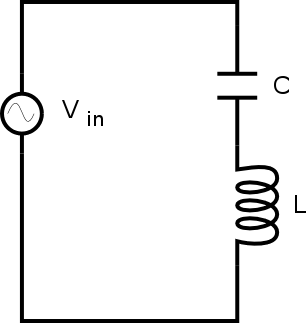
Pages created and updated by
Terry Sturtevant
Date Posted:
June 6, 2017


bash-4.1$ maxima Maxima 5.25.1 http://maxima.sourceforge.net using Lisp CLISP 2.49 (2010-07-07) Distributed under the GNU Public License. See the file COPYING. Dedicated to the memory of William Schelter. The function bug_report() provides bug reporting information. (%i1)
(%i1) z_l: %i * omega * L;
(%o1) %i L omega
(%i2) z_c: 1/( %i * omega * C);
%i
(%o2) - -------
C omega
(%i3) z_s: z_l + z_c;
%i
(%o3) %i L omega - -------
C omega
(%i4) limit(z_s,omega,infinity);
(%o4) infinity
(%i5) limit(z_s,omega,0);
(%o5) infinity
(%i6) ratsimp(z_s), omega = 1/sqrt(L*C);
(%o6) 0
(%i7) cabs(z_s);
! 1 !
(%o7) !L omega - -------!
! C omega!
(%i8) carg(z_s);
1
(%o8) atan2(L omega - -------, 0)
C omega
(%i9) z_p: (z_l * z_c)/(z_l + z_c);
L
(%o9) ------------------------
%i
C (%i L omega - -------)
C omega
(%i10) limit(z_p,omega,infinity);
(%o10) 0
(%i11) limit(z_p,omega,0);
(%o11) 0
(%i12) limit(z_p, omega, 1/sqrt(L*C));
(%o12) infinity





Wilfrid Laurier University
© 2019 Wilfrid Laurier University